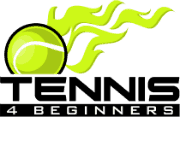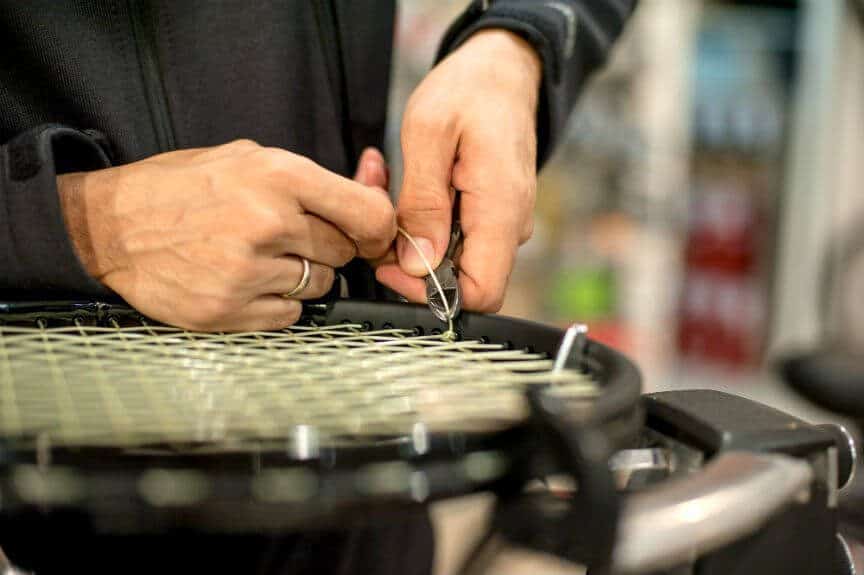Do You Need to String Your Own Racket?
For most players, the answer is likely no. Unless you are playing extensively and need to string your racket on a regular basis, you’re probably better off having it strung by a professional at a shop.
While the cost of stringing a tennis racket is not cheap, you would need to string your racket quite a bit for the investment to pay off. Tennis racket stringing machines run in the hundreds to thousands. It would take a while to recoup the initial investment.
In addition to that, you need to purchase reels of string and other tools that don’t come standard with the racket stringer. Then there is the time investment. It takes practice and time to get it right.
When Stringing Your Own Racket Makes Sense
So when does it make sense to invest in a stringer? Players who play daily, have a couple of rackets that they use regularly and put their rackets through intense use, would likely benefit from the investment in a racket stringer.
There are certainly advantages to stringing your own racket beyond economics. For one, you have more control over the process, assuming you become good at it. By stringing your racket regularly yourself you become more in tune with what tension works best for you. You have the opportunity to experiment more.
If you are not happy with the results, you can restring the racket right away without worrying too much about the cost, aside from the string. This allows you to really get a sense of what tension fits your style of play best. If you are taking the racket to a shop, you really don’t have this kind of flexibility.
Similarly, having the ability to string your own racket gives you more flexibility to experiment with different strings. You can find the string that best suits your style by trying out different kinds of strings, something you are less likely to do if you are taking your racket to a shop.
Making the Best of Your Investment
One way to offset the cost of purchasing a tennis racket stringer is to string rackets for others. If you offer others a better price than what they would have to pay at a shop it could be a win-win situation for both of you.
Of course, you need to become proficient at doing the job. It takes time to become good and consistent. You have probably noticed when taking your racket to a shop, that the quality varies from string job to string job. That’s because usually, shops have various people stringing rackets.
When you string your own rackets you have much better quality control. Once you become good at it, the quality will always be consistent since you will be the only person doing the stringing so you don’t have to worry about variances.
Another thing to keep in mind is that stringing machines do hold their value well. If you take good care of the equipment, you can usually recover a good part of the original cost when selling.
Next, let’s take a look at some of the basic differences between stringing machines available today.
Table Top vs Upright Racket Stringing Machines
As the names imply, there are two options when selecting a tennis racket stringing machine: portable ones that you place on top of a table and self-supported machines (floor models) that have their own stand and you typically use while standing.
Each has their advantages and disadvantages. Tabletop stringing machines are lighter and more easily portable. As long as you have a table or flat surface to work with, you can move the stringer to any location you choose, including the floor. They also take up less space and allow stringing from a seated position.
Upright racket stringing machines allow for greater movement since you perform the task standing up and as a result, stringing tends to be faster. Most, if not all professional stringers prefer stringing rackets standing up. It’s more comfortable and effective. The downside to upright stringing machines is that they tend to be more expensive.
Drop Weight, Spring Tension Head and Electronic Machines
Drop weight stringing machines have a weighted rod which creates the tension in the string. The weight can be moved along the rod to the desired tension. Drop weights employ gravity to create tension in the strings.
Spring tensioners, on the other hand, use a manual crank system which is secured by tightening a screw once the desired tension is reached. Both systems are fairly comparable in terms of results and in terms of cost.
Electronic racket stringing machines are the most accurate system available. They are typically the machines of choice by professional stringers due to their precision. They are, however, also the most expensive machines.
Frame Mounting Systems
There are essentially three types of frame mounting systems: 2-point, 4-point, and 6-point systems. In principle, the more mounting systems a machine has the more securely the racket can be held in place.
During stringing rackets are subjected to large amounts of stress. Machines with 6-point systems offer much better support for your racket. If you can afford to get a 6-point system, you should opt for the additional mounting. It will help better preserve the frame of your racket.
Another important aspect of frame mounting system is ease of use. More expensive machines tend to handle better and usually require less adjustment. A good frame mounting system will be strong, resistant and easy to use.
String Clamp Systems
The type of string clamp system of the machine is also an important consideration. There are 3 types of string clamps: starting clamps, floating clamps, and fixed clamps. Generally speaking, fixed clamps are the best choice.
Whereas floating clamps require a starting clamp to fix the strings to a frame, applying additional pressure to your racket, a fixed clamp system allows you to move a single clamp on a glide bar. The single clamp can be turned 360 degrees if needed.
Now that you have some background on the different types of systems available, let’s take a look at the stringer I would recommend, assuming you want quality without having to spend thousands.
Gamma Progression II 602: Quality Stringing Machine for the Money
A great tennis racket stringing machine for the average, non-professional player is the Gamma Progression II 602. It’s a quality stringing machine at a reasonable price. The Gamma Progression II is a tabletop machine with a drop weight system. It offers 6-point frame mounting with a floating clamp system.
While Gamma offers a less expensive model, the 6-point frame mounting system is worth paying extra for. It will help better support and protect your racket frame. You should also be able to produce good, consistent results with this machine.
The Gamma Progression II stringer offers strong, light-weight aluminum extrusion construction and 360-degree turntable rotation. It comes with additional tools, including a pathfinder awl, straight awl, hex wrenches, straight pliers, and a razor knife.
You can find the Gamma Progression II on Amazon: Gamma Progression II 602 Stringing Machine.

